Montenegro is one of the most underrated and diverse countries in the Balkans. A true gem of the Adriatic coast. It’s also a beautiful country that many people have never heard of unfortunately, so if you have been considering to travel to somewhere that is off-the-beaten-path in Europe, offers a sense of adventure and is budget travel friendly, Montenegro is a great choice for you.
Montenegro is such an ideal destination to travel cheap and on a backpacker’s budget per day $30-40 USD (obviously you can travel cheaper or much more expensive, but this is a general baseline budget that will be on the cheap, but still allow you to enjoy your travels).
Best Places to Visit Montenegro on a Road Trip:
-Mount Lovcen
-Bay of Kotor
-Durmitor National Park
-Biogradska Gora
Accommodation
Throughout most of Montenegro, you will find “apartmanis” available for nightly accommodation. Apartmanis are furnished units either attached or separate to someone’s house and come with clean bedding and sometimes a kitchen. They can be reserved for one night but the owner with usually offer a discounted rate for several nights. Bed and Breakfasts and some hostels are also available in certain areas for affordable and reasonable rates. Apartmanis rates are also reasonable, but depending on the region, the season, and the furnishings, the rates will vary. If you’re on the coast mid-summer, you’re likely to find that the rates are a bit higher. Nightly accommodation can be cheap and even in places like the Bay of Kotor you’re likely to find somewhere to stay for as low as $15 a night.
On vacation rental sites like AirBnb you will also be able to find weekly rates for rentals in different regions and price ranges that can better accommodate a family or a couple staying in a town for several days.
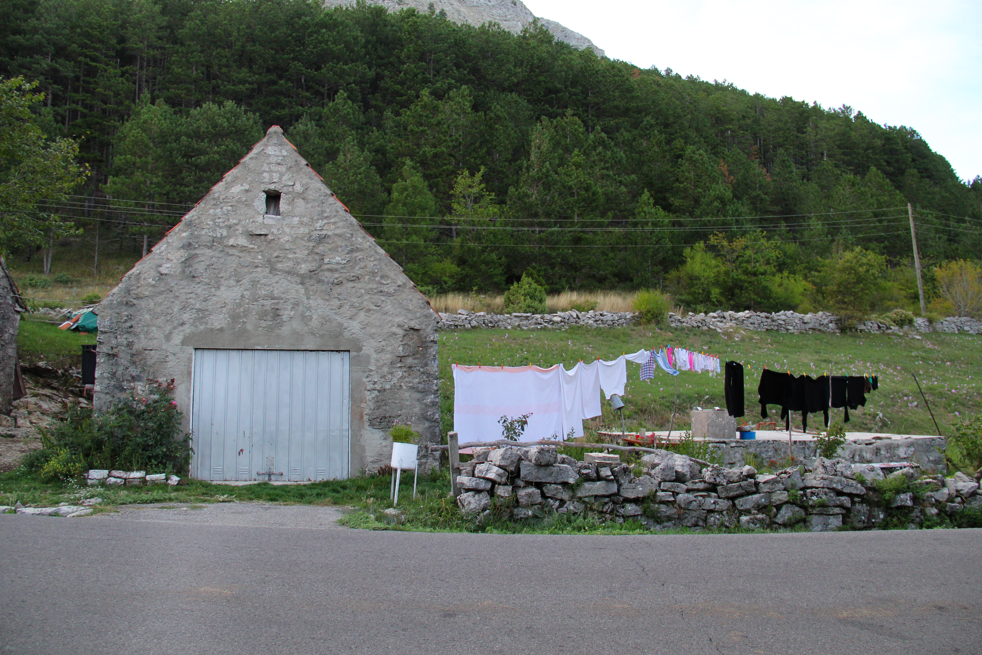
Typical Accommodation Costs:
Hostels = $7-25 USD
Hotels = $40-300 USD
Apartmanis = $25-100 USD
Food
Unless you are in a resort area, vacation or tourist town like Old Town Kotor, you’re going to have a harder time finding a lot of restaurants to choose from. Kotor’s old town has several restaurants with a variety ranging from seafood to pizza and plenty of cafes. In fact, throughout Montenegro you’ll find cafes everywhere throughout towns and cities, but not so much restaurants that we typically dine in the US. For Montenegrins it is more customary to eat at home with family, then head out to the cafes to meet with friends for hours. If you’re staying in an apartment or a hostel, your best bet might be to cook your meals which would also save you money.
Typical Montenegrin food includes crepes, stuffed grape leaves, hearty stews, kacamak (katch-ah-mak), polenta, prosciutto, ajvar (ahy-var) and bureg. You can almost always find a place that serves your typical roasted chicken and fries. During my stay in Zabljak our hostel owner cooked dinner and breakfast for us for 5 euro which was an exceptional price. For dinner she made us a vegetable stew and and a side of wild chanterelle mushrooms with a special sauce.
Montenegro can be much more affordable than Western Europe, so when you are going out for a nice dinner, you feel as though you’re splurging and going beyond budget, but really you may only be spending $10-$20.
Typical Food Costs:
Restaurant= $5-15 USD
Bread= $0.30 cents USD
A weeks worth of grocery items from the store= $15-45 USD per week
Coffee= $0.70 cents USD
Liter of beer= $0.50 cents USD
Bottle of wine= $5+ USD
Snack/light meal= $2-4 USD
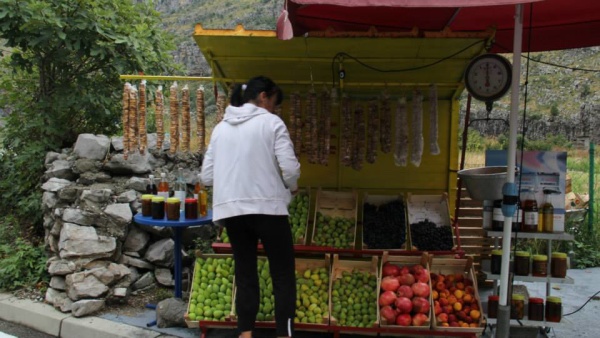
How to Get Around in Montenegro
If you’re comfortable with driving on international roads, I recommend renting a car while in Montenegro and if it fits within your budget. Some of the most interesting parts of the country can be easily accessed by car, and the country is small enough that it can be traversed within a day.
I rented my car in Dubrovnik, Croatia using Auto Europe, which is affiliated with UniRent and drove it through both Montenegro and Bosnia. When arranging a reservation you need to inform the rental agency that you plan to drive the car out of the country so they can give you the proper documents you need to present at border crossings. Basically, you need to show proof that you have permission to drive the car out of the country.
Cost of Gas: 1.35 EUR per liter
Cost of Rental: Approximately $35+ per day
Like driving in any country you need to have a valid driver’s license while driving in Montenegro and foreign drivers licenses are accepted. It doesn’t hurt to also get an International Driver’s license, which you can order through AAA.
Driving laws in Montenegro that are tightly enforced:
- Always wear a seat belt
- No talking on cell phone or texting
- No drinking and driving
- Follow local speed limit laws
If you are involved in a car accident, call the local law enforcement to file a report.
If you are not renting a car in Montenegro, the bus system is a reliable and extensive mode of transportation. If you are traveling during the high tourist season, purchase your ticket in advance so that you are guaranteed a seat. Whether you’re traveling within Montenegro or heading to Turkey or another Balkan nation, you will find that the bus system will get you to where you need to go. The main bus station of Montenegro is in Podgorica, most if not all bus lines make their way to the capital city. The international bus services that drive through Montenegro makes it easy to travel from Sarajevo, Mostar and Dubrovnik.
At border crossings, customs police enter the bus and collect all passports from passengers and return them after they have been reviewed and stamped.
Typical Transportation Costs:
The cost of bus tickets vary by distance from 4 Euro to 48 Euros. If you are traveling by bus within Montenegro during the summer season, your bus fare will range from 4 to 10 Euros, which is fairly reasonable, but if you are traveling to a different country, expect to pay a bit more. Just make sure to book ahead to lock down a seat.
Tips for Saving Money While Traveling
- Travel in the off-season- Thanks to Montenegro’s undeniably beautiful beaches and quaint islands, the summer season is very popular time for tourists to head to Montenegro and for locals to make their way to their beach homes. With that, the cost of hotels, apartamanis and hostels jump up during these high demand months. If you still want to enjoy the warm beaches and beautiful mountain trails, traveling between late August and early September or from April to May is also ideal. However, even with the higher rates, the country is still very affordable on a budget though accommodations may be limited.
- Avoid tourist traps- Like with any town or attractions that are geared towards tourists, costs are going to be higher. Old Town Kotor is a great place to explore and have a romantic dinner in, but the shops and even restaurants are a bit more pricier there than what you would pay at a restaurant outside of Old Town. Don’t get me wrong, a fancy dinner for two with beer and seafood may cost only $15, but outside of town you could be spend much less than that at a local taverna.
- Buy fresh and local- Montenegro is abundant with fresh fruit stands and stocked grocery stores and they are very cheap. If you take an insulated bag with you on the trip, you can buy fresh produce that will last for breakfast and snacks. Fresh deli meat, cheese and bread is very cheap at local markets too and you can make a few meals out those items.
- Pay what locals pay- Cash is the preferred choice of payment in Montenegro and since 2002 the currency has been the Euro. You will not be able to use US dollars, Croatian kuna or Bosnian marks as a method of payment. Most major credit cards are accepted in Montenegro, but be sure to carry a Visa and a Mastercard because some places were only able to accept one or the other and not both. Discover cards are rarely accepted anywhere in the Balkans, including Montenegro.
- Carry Your Student ID- Students can get a discount at museums if they have their student ID. So if you or your kids, make sure to carry it with you to save money on select entry fees.
Sights and Activities Not to Miss in Montenegro
Expect to pay less for activities and sights than most Western European countries. There are many free activities and discounts may be available for students and teachers. With the abundance of natural sights, you will find many possible activities and tours such as trekking in Durmitor National Park, various day tours around Kotor Bay, lounging at the beaches, white water rafting on the Tara River, winery tours, and much more!
Sights and activities costs:
Walk the walls of Kotor – 1 Euro
Lovcen National Park – 3 Euros
Durmitor National Park – 1-3 Euros
Biogradska Gora National Park – 1-3 Euro
Zip Line Tara Canyon – 10 Euros
Rafting Tara Canyon – 25+ Euros
Top Things to See and Do
Bay of Kotor- Aside from the constant afternoon influx of cruise ships, the Bay of Kotor is a sparkling gem of Montenegro. While it is very much touristy, the Old Town is still inhabited by people going about their daily lives among the citadels and fort walls built during the 15th century. There you can explore different passageways, hike the walls of the fortress and shop and dine.
Lake Skadar- Lake Skadar is the largest lake in the Balkans and borders Albania as well. There are several islands on the lake that house monasteries and churches on them, but also in the villages surrounding the lake. The lake is open for kayaking, swimming, hiking, birdwatching and fishing (with fishing permit).
Durmitor National Forest- Durmitor National Park is a magnificent UNESCO World Heritage site filled with protected forests, lakes and hundreds of miles of trails. During the late spring and summer seasons, mountain biking and hiking are some of the most popular activities to take part of. If you’re in good and shape and looking for an adventure, you can hike Bobotov Kuk, the highest peak in the Durmitor mountain range.
Mount Lovcen- The top of Mount Lovcen is home to Petar Petrović Njegoš’s Mausoleum who is revered as the national symbol of Montenegro. There you will find his mausoleum, a chapel, and beautiful statues of Mother and Daughter Montenegro and Njegoš’ sculpted by Ivan Mestrovic, a world renowned sculptor.
Ostrag Monastery- Ostrag Monastery is a 17th-century Serbian Orthodox monastery built on the side of a cliff. The original structure was damaged in a fire and so the monastery was reconstructed in the 1920’s. It’s one of the most popular location for pilgrims to visit in the Balkans because it was founded by Vasilije, the Metropolitan Bishop of Herzegovina and pilgrims believe that visiting and praying at the site will bring ease into their lives.
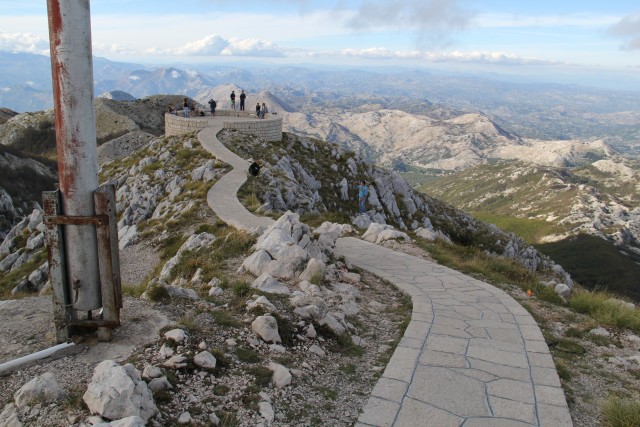
Is Montenegro Safe?
Montenegro is a very safe country whether you’re a female traveling solo or with a group of friends, but that doesn’t mean you should ever let your guard down. Use common sense whenever you are traveling and keep your valuables close to you.
Useful Phone Numbers
Even if you don’t have a working cellphone while in Montenegro, but do have access to Skype via Wi-Fi, you can make free calls as long as it’s a 1-800 number. You can also load money with a credit card or with an iTunes gift card to be able to make calls to other wireless numbers or landlines anywhere in the world. Skype is a free app that you can download to your smartphone, tablet and laptop.
Montenegro’s international code is +382. All of Montenegro has the same code so you don’t have to worry about finding out what the code is from city-to-city like you would in California. To make a call you would first dial 382, then dial the phone number. For example, to call the police with Skype you would dial 382-122.
Emergency: 382-112
Police: 382-122
Fire Department: 382-123
Ambulance: 382-124
Exact time: 1382-25
I hope that you enjoy Montenegro as much as I did!
If you enjoyed this post, why don’t you follow Adrift Anywhere on Facebook or subscribe to get updates on budgeting tips, travel advice and tips!
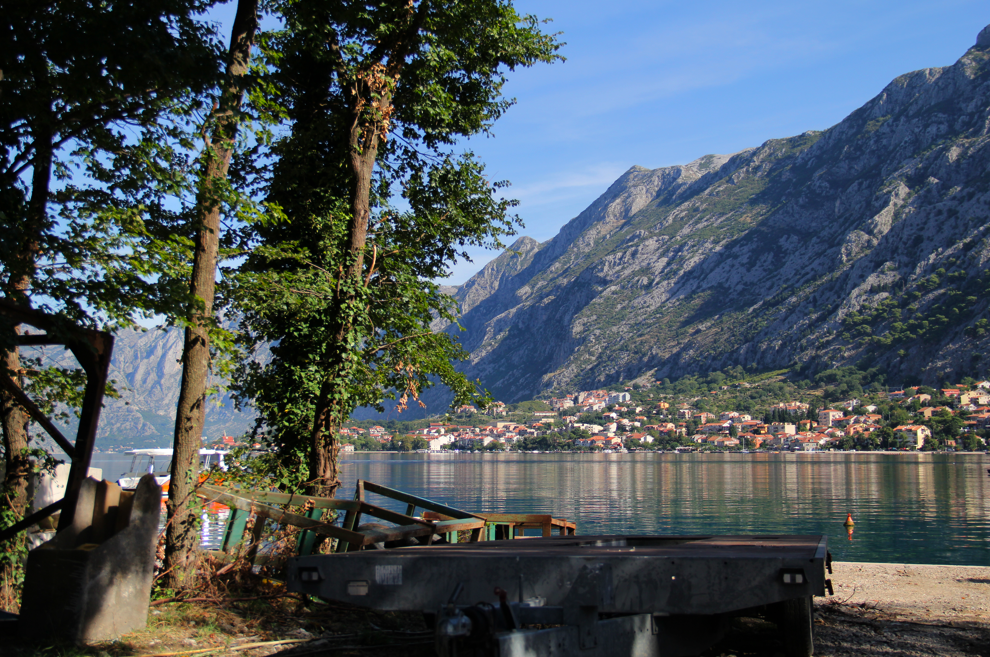
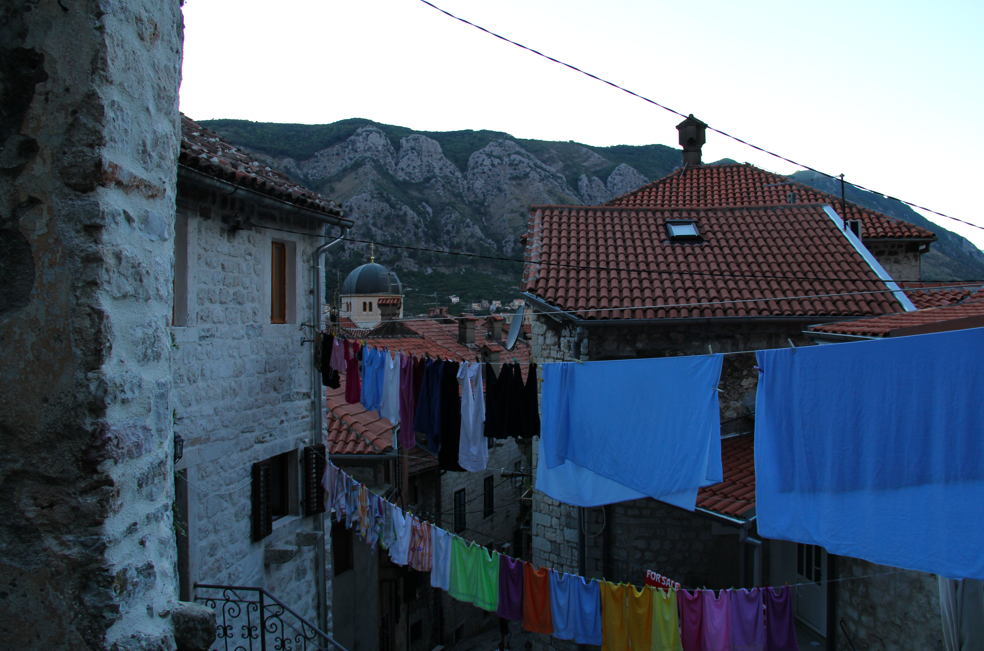
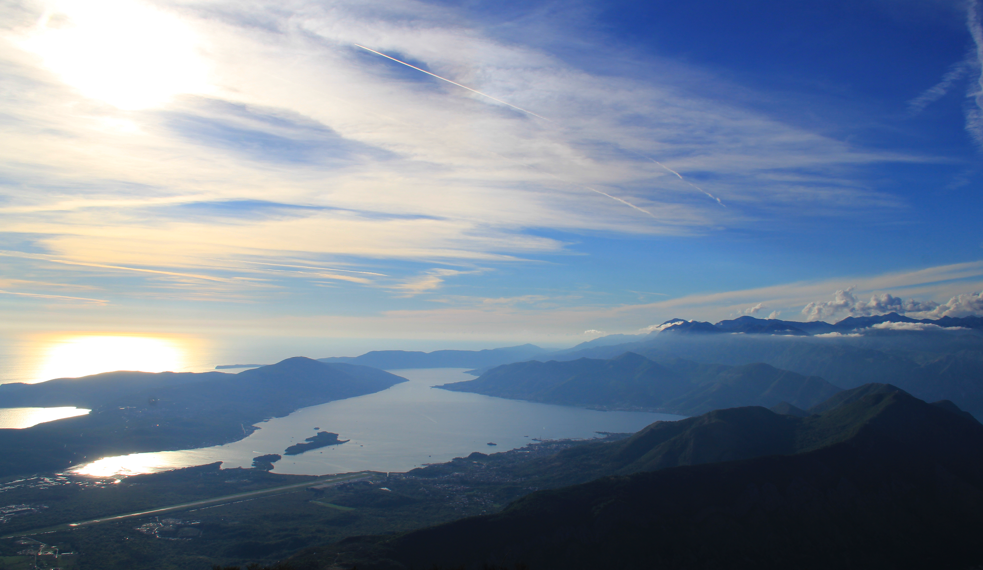
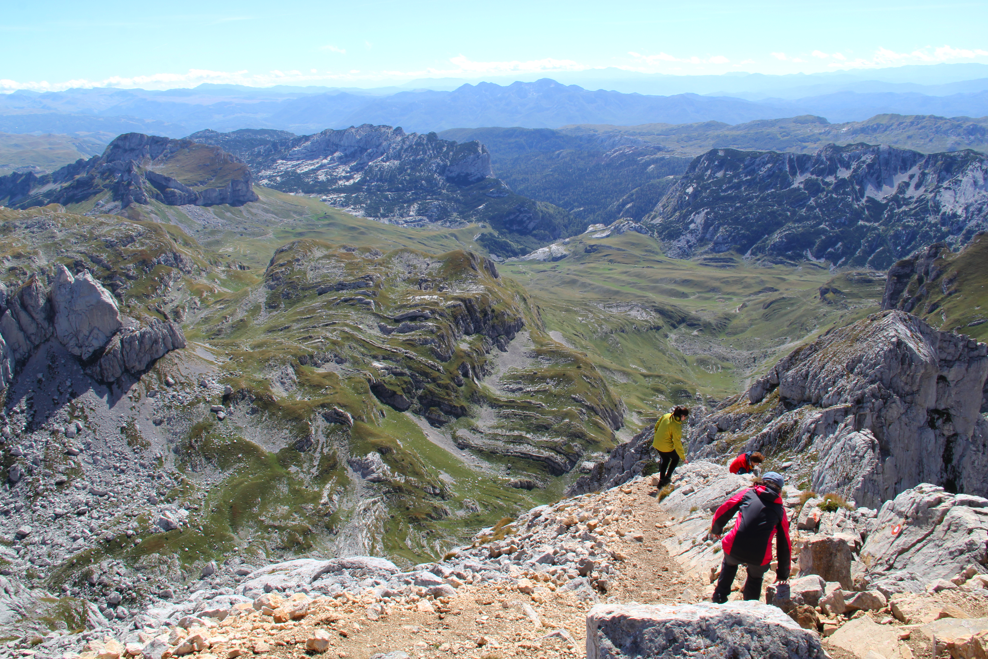
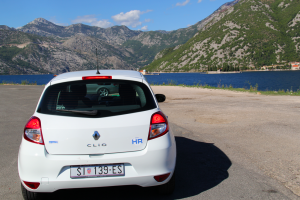
Very nice post. Informative. I’m off to Montenegro and Croatia but for very little time later this month and was thinking of renting a car.